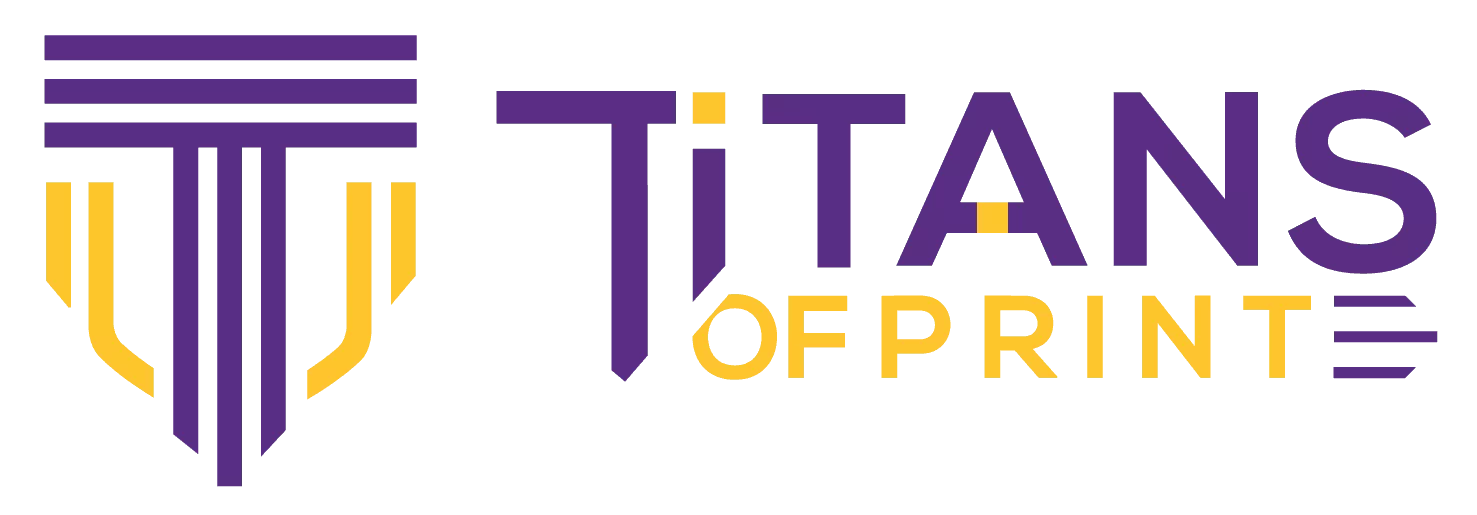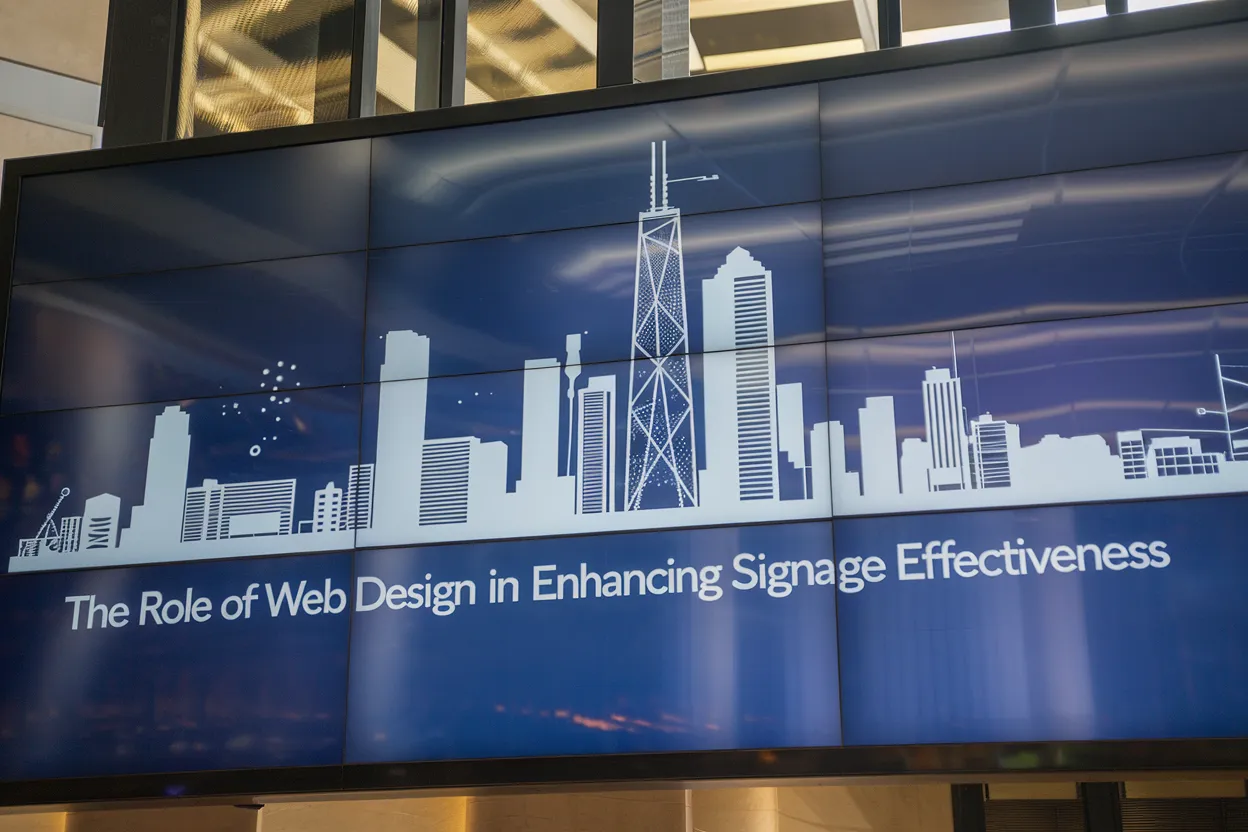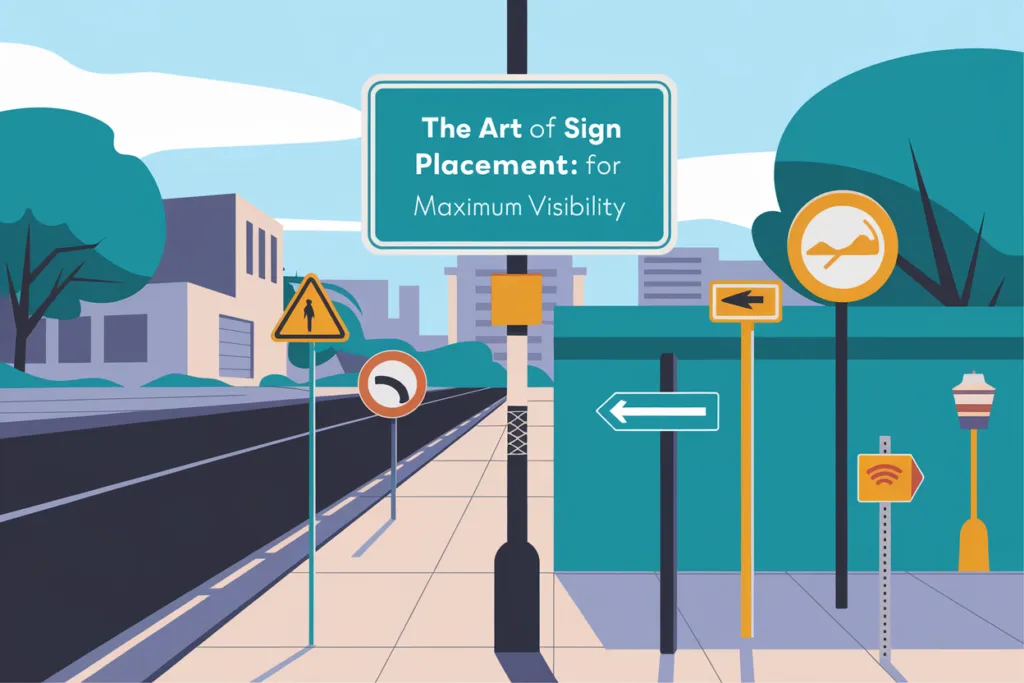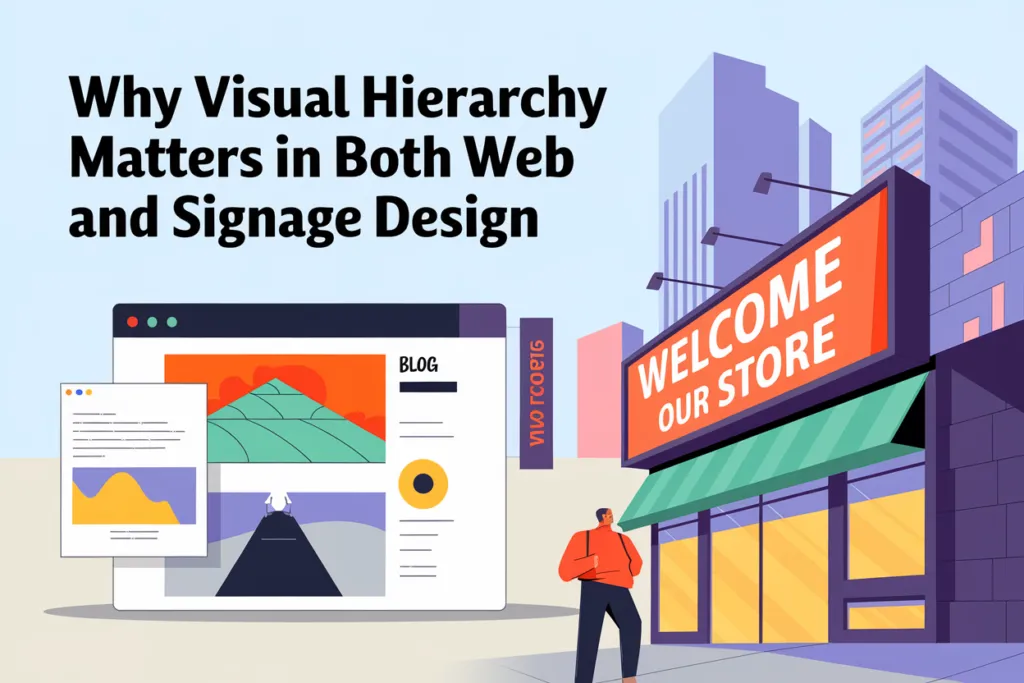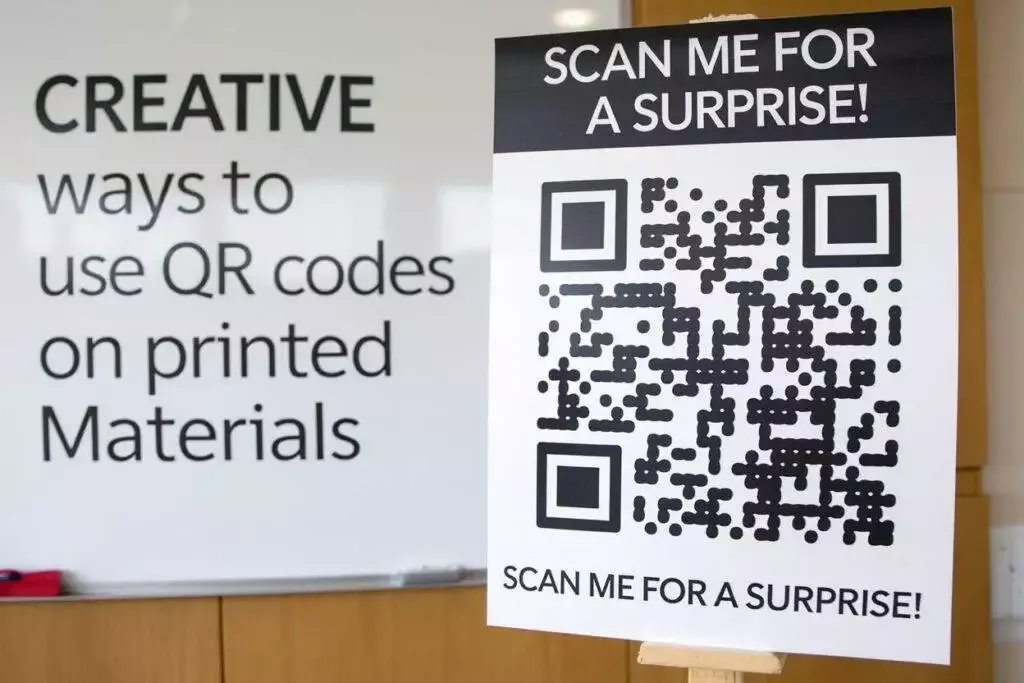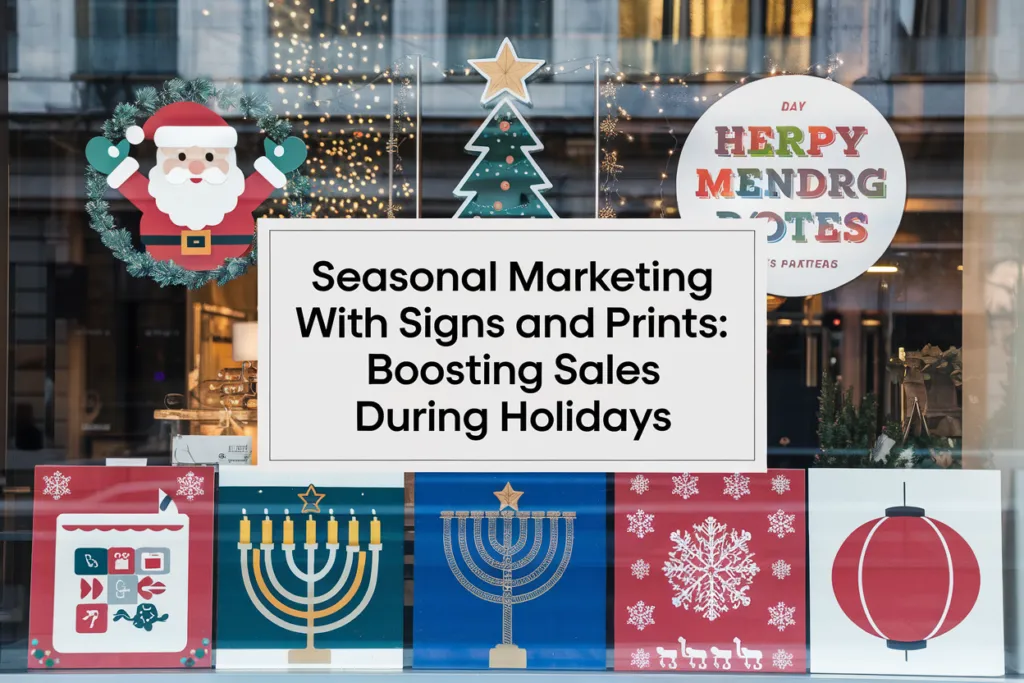In today’s bustling digital landscape, where catchy websites and eye-catching apps compete for our attention, the art of signage often gets overshadowed. But let’s take a moment to appreciate how these often-overlooked signboards continue to play a pivotal role in guiding our journeys, both in the physical world and online. Just like a good web design weaves a story that captures visitors from the moment they land on a page, effective signage does the same for our everyday encounters—whether we’re navigating a shopping mall, exploring a new city, or even trying to find the restroom at our favorite café. So, what if we could blend the creative principles of web design with the world of physical signage? Imagine a seamless experience that not only grabs your attention but also enhances understanding and usability. In this article, we’ll explore how the colorful threads of web design can be woven into the fabric of effective signage, turning ordinary encounters into extraordinary experiences. Buckle up as we embark on a journey where pixels meet placards, and discover how great design can make all the difference!
Elevating Visual Communication Through Thoughtful Design
When it comes to effective signage, the integration of web design principles can make all the difference. Thoughtful design empowers signage to not only convey information but also to tell a story. By utilizing contrast, hierarchy, and modular layouts, designers can direct the viewer’s attention exactly where it’s needed. Consider elements like color palettes that evoke emotions, fonts that enhance readability, and imagery that captures the essence of a brand. All these details come together to create a cohesive visual language that resonates with the audience, making the sign not just a marker but a memorable touchpoint.
Moreover, the digital world has introduced dynamic elements that can further amplify the role of signage. Interactive displays and responsive designs invite engagement, transforming static messages into vibrant conversations. Here’s a quick look at some design techniques that elevate signage:
- Clear Typography: Use bold, legible fonts that communicate messages at a glance.
- Color Psychology: Choose hues that align with the emotional undertones of the message.
- Imagery and Icons: Incorporate visuals that support and clarify the text.
- Consistent Branding: Ensure all elements align with the overall brand identity for recognition.
| Design Element | Impact |
|---|---|
| Contrast | Enhances readability |
| Layout | Guides viewer flow |
| Typography | Conveys tone and clarity |
| Imagery | Captivates attention |
Crafting User-Friendly Navigation to Guide Visitors Seamlessly
Creating a seamless navigation experience is akin to providing a clear path for your visitors to explore your website. When the layout is straightforward and intuitive, users are more likely to engage with your content rather than feeling lost or overwhelmed. It’s vital to consider the following elements for effective navigation:
- Consistent Structure: Ensure the menu design remains uniform across all pages, offering a familiar sight for returning visitors.
- Descriptive Labels: Use clear, concise titles for navigation links that reflect the content they lead to, making it easy for users to know where they’re going.
- Hierarchical Organization: Organize pages in a logical structure, prioritizing the most important information at the top level and drilling down through subcategories.
Additionally, integrating visual cues can enhance usability by guiding users toward their desired action. Employing contrasting colors, icons, or even animations can draw attention to key navigational elements, making the experience interactive. A well-structured navigation system should include:
| Element | Benefit |
|---|---|
| Sticky Navigation | Keeps options visible as users scroll, promoting accessibility. |
| Search Functionality | Helps users find specific content quickly, reducing frustration. |
| Bread Crumb Trails | Allows users to track their path, making re-navigation effortless. |
Harmonizing Brand Identity and Signage for Lasting Impressions
Creating a cohesive brand experience is vital in today’s competitive landscape. When web design aligns seamlessly with physical signage, brands convey their message effectively, captivating audiences both online and offline. Whether it’s the use of consistent color palettes, typography, or graphic elements, harmonizing these aspects ensures that customers can instantly recognize a brand no matter where they encounter it. Consider these essential elements that bridge the gap between web and signage design:
- Color Schemes: Matching your website’s color palette with your signage enhances brand recognition.
- Typography: Consistent font choices create a unified visual identity across all platforms.
- Imagery: Using similar images and graphics reinforces the brand’s values and message.
Moreover, the effectiveness of signage can be significantly amplified through strategic web design features. Incorporating feedback loops, such as QR codes that lead to a dedicated landing page, allows for instant interaction with potential customers. Here’s a simple table that outlines the potential impact of various web design elements on signage effectiveness:
| Web Design Element | Signage Impact |
|---|---|
| Responsive Design | Ensures accessibility across all devices, making your signage relevant to a broader audience. |
| Clear Call-to-Actions | Encourages immediate engagement, leading to improved conversion rates. |
| Consistent Branding | Fosters trust and recognition, enhancing your brand’s credibility. |
Leveraging Technology: Smart Signage Solutions for Modern Needs
- Consistency: Use unified branding elements and color schemes.
- Accessibility: Ensure that content is easy to read from various distances.
- Dynamic Content: Regularly updated visuals keep the signage engaging.
| Feature | Benefit |
|---|---|
| Interactivity | Encourages user engagement and feedback. |
| Cloud Management | Facilitates real-time updates from anywhere. |
| Analytics Integration | Allows for measuring the effectiveness of messaging. |
Concluding Remarks
As we wrap up our exploration of the intricate dance between web design and signage, it’s clear that the two are more interconnected than we might have initially thought. Just as a well-designed website captures attention and delivers information seamlessly, effective signage works to communicate messages with clarity and impact.
In a world where first impressions are fleeting, and attention spans are shorter than ever, harnessing the power of web design principles can significantly enhance the effectiveness of your signs. From thoughtful color palettes to intuitive layouts, the lessons we’ve gleaned from the digital realm can transform static signage into dynamic beacons of communication.
So, whether you’re a business owner looking to captivate potential customers or a designer aiming to push the boundaries of creativity, remember that the synergy between web design and signage can unlock new possibilities. Let’s embrace this harmonious blend, making every sign more than just a marker but a memorable experience that resonates with its audience.
designing for the web and designing for the physical world are just two sides of the same coin—a coin that holds significant value in the way we communicate and connect with one another. So go on, make those signs sing, and watch as the world takes notice!

